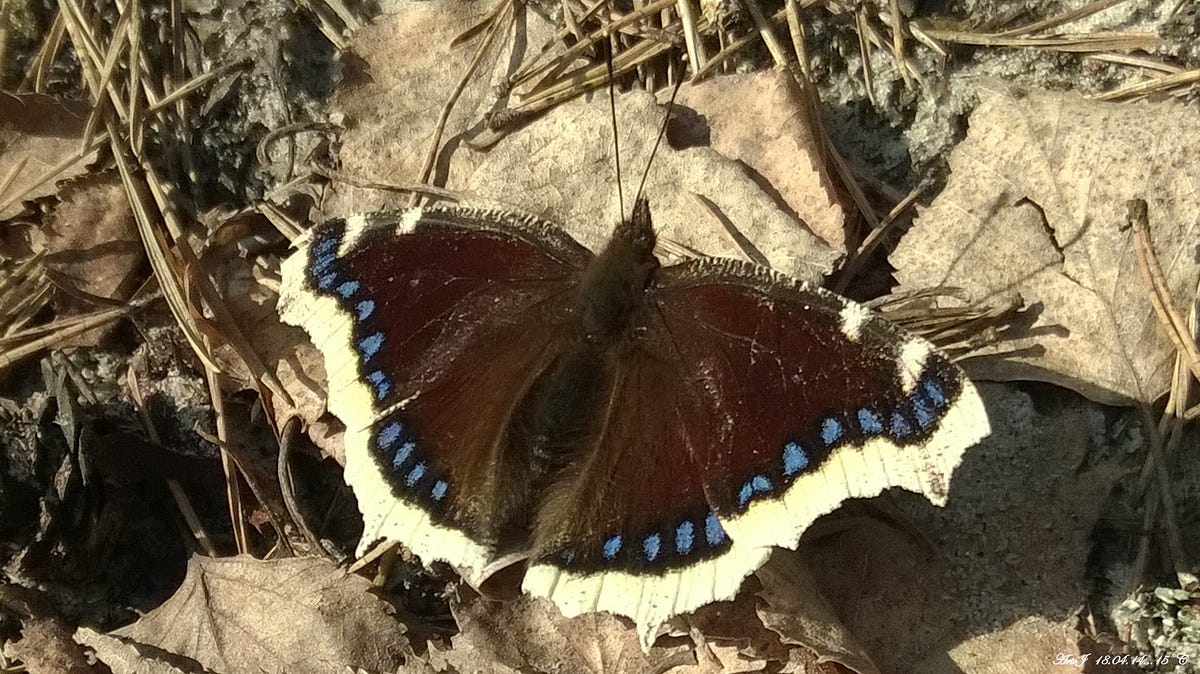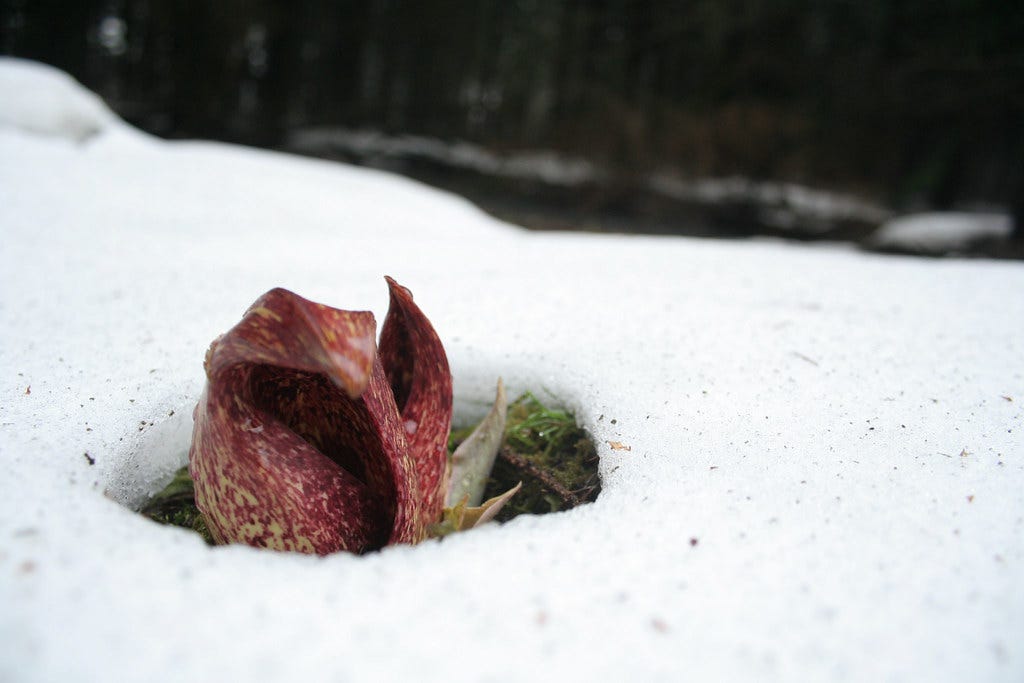Spring Parade
The first few weeks of Spring — hazily defined as lasting from mid-March into early April — is one of my favorite times of the year. While the winter forest is a sleepy, quiet place and the summer is buzzing and lurching with the actives of the growing season, life in the early spring seems to take on a more organized, ceremonial pace. It’s a bit like a parade, with each participant arriving on the scene, taking its moment in the spotlight, then advancing once more into the tangle of the whole so as to make room for the next act — except instead of high school marching bands and pickup trucks full of little leaguers, the participants are birds, bugs, and flowers, arriving, emerging, and blooming in a semi-predictable order hundreds of thousands, if not millions of years in the making.
The identity of the parade’s participants and the order of their arrival will vary depending on where exactly you are, adding to the fun. Just like the neighborhood across town doesn’t have that guy who dresses up as a mute Abraham Lincoln every year for Halloween, the state of California does not get to enjoy the yearly arrival of singing eastern towhees and instead must settle for its spotted cousin (which I’m sure are fine). All kidding aside, there really is something wonderful about being able to think to yourself “bird x should be showing up soon” and then to hear that very bird the next day. Not only is there a distinct pleasure in a prediction well-made, but also in finding yourself plugged into the community that you inhabit enough to know the actives and habits of your neighbors.
Yesterday, while refreshing boundary markers at Goshen Wildlife Management Area in Goshen, CT, I finally heard the drums marking the beginning of the March (pun intended). Spring is underway in New England and, if you want to follow along, here are some of the first few acts that should be happening over the next few days.
Eastern Pheobe:
In case you thought I was exaggerating about the predictability thing, a couple days ago I was literally thinking to myself “phoebes should be showing up soon” and sure enough, I heard my first one of the year yesterday morning, before I even left the office. A small, somewhat dully colored member of the Tyrannidae flycatcher family, the eastern phoebe (Sayornis phoebe) is to New England birders what the state of Iowa is to political reporters (I don’t think I’m mixing my metaphors here — the primary is a bit like masochistic parade). Each year, their return north during the first few weeks of March marks the beginning of the spring migration, and they are often followed closely behind by eastern towhees, chipping and field sparrows, pine and palm warblers, and then a fire hose of daily new arrivals that usually trickles to a stop by the end of May. Early arriving migrants like the phoebe secure their spot in the parade by forgoing the tropical, South American vacations taken my many of the relatives for a slightly chillier, though still pleasant winter spent in the southeastern United States and Mexico.
Once they arrive back up north, male phoebes waste little time in staking out a breeding territory and trying to attract a mate with the distinctive song from which they get their unusual name — a high pitched, raspy fee-bee! Aside from when they are mating, phoebes are pretty solitary birds and, while she is in the process of laying her eggs, a female phoebe will often chase the male off. Phoebe nests are constructed of mud and plant material and, these days, can often be found stuck beneath the eaves of houses or on the sides of bridges or culverts (an eastern phoebe built her nest of the side of the building I was living in last summer). This willingness to use human structures also translates into a general tolerance of human actives, though they do prefer to breed in wooded areas. Phoebes, like most flycatcher, eat flying insects and, if you look near the water, you can often see them perched high on a dead branch, flying up rapidly to snatch insects out of the air, and then returning to their perch.
Mourning Cloak:

The day I hear my first phoebe of the year is always a good one, but add to that seeing my first mourning cloak a few hours later and its impossible not to consider it an excellent one on balance. Just as the eastern phoebe is the first migrating bird to appear each year in New England, so the mourning cloak (Nymphalis antiopa) is the first butterfly. Unlike most other butterflies, mourning cloaks overwinter in their adult form, hibernating beneath the bark of a tree or hidden in the leaf litter or in the tangle of dead herbaceous plants. This means that they are ready to fly as soon as it gets warm enough — usually sometime in mid-March when, in the northern parts of their range, there is often still snow on the ground! During this time, there usually aren’t too many flowers in bloom, so mourning cloaks instead feed on tree sap, as well as fruit when it appears later in the season. Groups of the butterfly can sometimes be seen gathering around human-made maple taps or the holes of yellow-bellied sapsuckers to feed on the sap being released.
Once they emerge from hibernation, mourning cloaks quickly get down to the business of finding a mate, with males usually defending a sunny spot where they can perch and wait for an interested female to pass by. After her eggs are fertilized, the female will lay them on one of the many host plants that a mourning cloak caterpillar will feed on, including willows, elms, aspens, and birches. The caterpillars themselves are gray and black with reddish-orange dots going down their bodies and pointy spines on their backs. They like to be in groups and will spend much of their early lives feeding together in a silk web. By June or July, they will have gone through metamorphosis and, after feeding for a short while as adults, they enter into a period of estivation — basically hibernation during summer — until fall, when they emerge again to feed in preparation for winter hibernation! They may spend most of it unconscious, but with a life span of 10 to 11 months, the mourning cloak is in the running for the longest living butterfly in the world.
Eastern Skunk Cabbage:

Hearing an eastern phoebe or seeing a mourning clock butterfly are usually pretty good indicators that spring is on its way; this is also true for the final species we’ll be talking about here to today, though the term “on its way” is doing some pretty heavy lifting for this one. While it is probably best known for the unpleasant spell released from its leaves when damaged, the eastern skunk cabbage (Symplocarpus foetidus) also has the honor of being one of, if the first wildflowers to bloom each year — in February! How does a flower bloom in February? Well, the skunk cabbage is no ordinary flower. For one thing, it’s a bit strange looking, with the flower itself resembling a blown-up picture of a virus or a spikey ball that you’d get for way too many tickets a Chuck-E-Cheeses, wrapped in a spirally cup of dark red or purplish leaves called a spathe. More to the point, however, the skunk cabbage is able to bloom even in the winter because of its ability to produce its own heat through cellular respiration, allowing it to literally melt its way through frozen ground and the snow above!
Because they bloom so early, skunk cabbages play an important role in the ecology of an early spring forest. Skunk cabbage flowers do not produce nectar, but they do produce large amounts of pollen (which bees need as a protein source for their larva) and may also provide warm pit stops for bees traveling between their nests and richer sources of nectar. For the most part, however, their flowers are pollinated not by bees, but by flies and beetles, which are attracted to their odor. Some naturalists have observed that spiders like to make their webs inside the spathes of the skunk cabbage flower, perhaps as a way of catching flies and beetles that stray within. Because of their smell and the inflammation that they cause when consumed, most animals will not eat mature skunk cabbage leaves, with the one exception being black bears that have just awoken from hibernation. At this time of the year, there usually isn’t much other food around and having not eaten anything for a couple of months, the bears will gorge themselves on young shoots until more appetizing meals begin to emerge.
Sources:
Butterflies and Moths of North America (n.d.). Mourning cloak. Butterflies and Moths of North America. https://www.butterfliesandmoths.org/species/Nymphalis-antiopa
Cornell Lab of Ornithology (n.d.). Eastern phoebe: Life history. All About Birds. https://www.allaboutbirds.org/guide/Eastern_Phoebe/lifehistory
Enroth, C. (2023). The mourning cloak butterfly. Illinois Extension. https://extension.illinois.edu/blogs/good-growing/2023-02-16-mourning-cloak-butterfly#:~:text=Once%20it%20finishes%20the%20amazing,in%20preparation%20for%20winter%20hibernation.
Keffer, K. (2021). The butterfly of spring: Meet the mourning cloak. Cool Green Science. https://blog.nature.org/2021/04/06/the-butterfly-of-spring-meet-the-mourning-cloak/
Kevan, P. G. (1989). How honey bees forage for pollen at skunk cabbage, Symplocarpus foetidus (Araceae). Apidologie, 20(6), 485–490.
Knutson, R. M. (1974). Heat production and temperature regulation in eastern skunk cabbage. Science, 186(4165), 746–747.
National Wildlife Federation. (n.d.). Skunk cabbage. National Wildlife Federation. https://www.nwf.org/en/Educational-Resources/Wildlife-Guide/Plants-and-Fungi/Skunk-Cabbage
Williams, K. A. (1919). A botanical study of skunk cabbage, Symplocarpus foetidus. Torreya, 19(2), 21–29.
Photo Credits:
(1) "Eastern phoebe on branch" - by fetafete (CC BY-SA 4.0)
(2) “Mourning Cloak butterfly - Camberwell (Nymphalis antiopa) - panoramio” - by Arto J (CC BY-SA 3.0)
(3) “Skunk-cabbage in snow” - by Ryan Johnson (CC BY-SA 3.0)

.jpeg)


Comments
Post a Comment